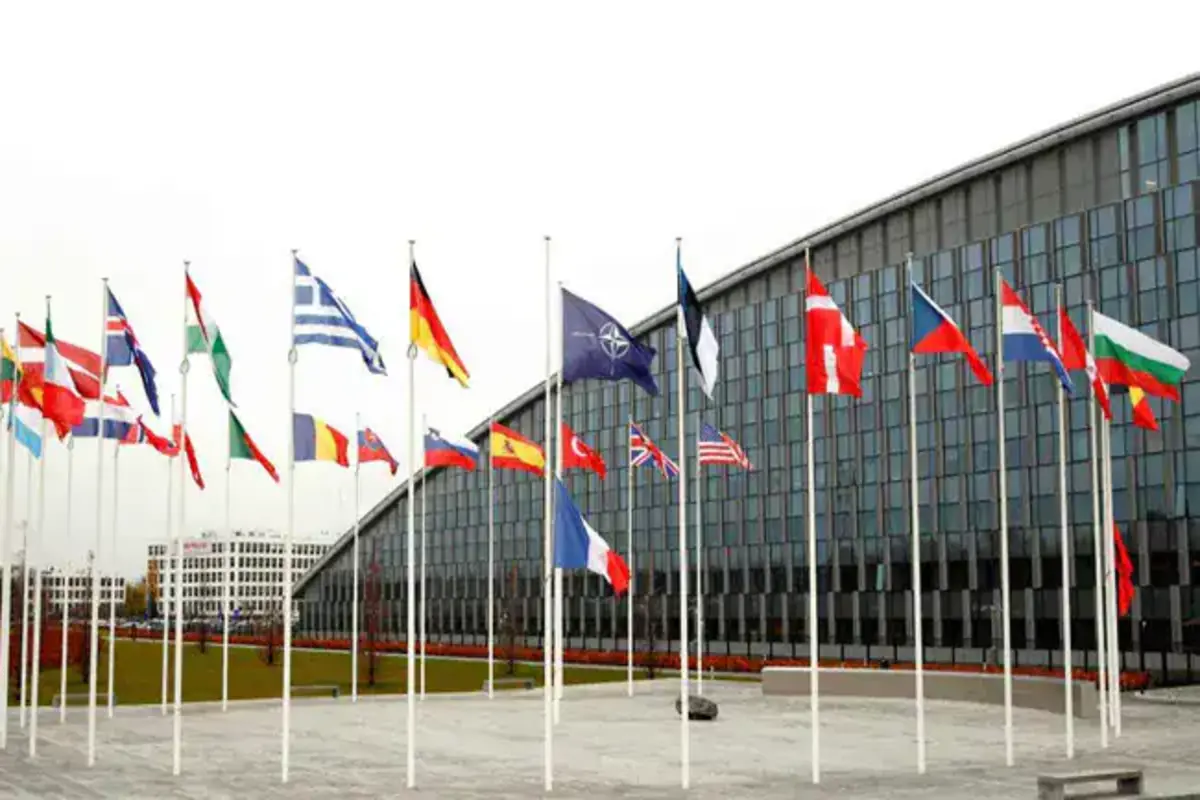
Swedish policy dictated that the country needed a strong military to protect its neutrality.
Sweden’s bid for NATO membership, prompted by Russia’s invasion of Ukraine in 2022, appears poised to pass its last hurdle as Hungary prepares to vote on ratification this Monday. Joining the US-led alliance signifies significant shifts for Sweden’s defense strategy and the overall geopolitical landscape in the region.
Why did Sweden decide to join NATO?
In the wake of the Napoleonic wars in the early 19th century, Sweden embraced a stance of official neutrality. This position evolved following the conclusion of the Cold War, transitioning into a policy of military non-alignment. Despite refraining from direct involvement in armed conflicts for over two centuries, with the Swedish-Norwegian War of 1814 marking its last military engagement, Sweden has maintained an assertive foreign policy. Renowned for its advocacy of human rights and its status as a leading aid contributor per capita, Sweden has earned the moniker of a “humanitarian superpower.”
While steadfastly remaining outside the NATO alliance, Sweden has progressively deepened its collaboration with it. This engagement commenced with participation in the Partnership for Peace program in 1994, followed by membership in the Euro-Atlantic Partnership Council in 1997. Nevertheless, full NATO membership has long faced resistance from a majority of Swedes, particularly within the Social Democrats, the nation’s predominant political party. Notably, former Social Democrat defense minister Peter Hultqvist emphatically disavowed any intention to pursue NATO accession, asserting his categorical opposition.
Also Read: India to Raise Key Issues from Stockholding to Fishing Rights at WTO
However, the landscape swiftly shifted following Russia’s invasion of Ukraine in 2022. The ensuing geopolitical upheaval precipitated a remarkable transformation in public sentiment and political dynamics. Subsequently, a substantial majority within the Swedish parliament rallied behind a motion to explore NATO membership. Consequently, Sweden, along with Finland, formally applied for NATO accession in May 2022, marking a significant departure from its longstanding stance of neutrality.
What does Sweden bring to NATO?
After decades of prioritizing a robust military to safeguard its neutrality, Sweden underwent a significant shift in defense strategy following the conclusion of the Cold War. During this period, the country substantially reduced its defense expenditure, redirecting its military focus towards participating in peacekeeping endeavors globally.
Statistics from the government reveal a notable decline in defense spending from 2.6 percent of the gross domestic product (GDP) in 1990 to 1.2 percent by 2020. However, geopolitical events triggered a reversal in this trend, particularly with Russia’s annexation of Crimea in 2014. Consequently, Sweden initiated a gradual increase in defense spending, with an aim to reach two percent of GDP at the earliest opportunity, a goal announced after Russia invades Ukraine in March 2022.
By late 2023, the Swedish government disclosed plans to surpass the two percent target in military expenditure by the year 2024. The Swedish Armed Forces, comprising approximately 50,000 soldiers, half of whom are reservists, boast a formidable array across various branches.
Also Read: SC Notices ED on Sanjay Singh’s Bail Plea; Hearing Set for March 5
Notably, the Swedish Air Force operates over 90 domestically manufactured JAS 19 Gripen fighter jets, while its naval forces, stationed in the Baltic Sea, consist of several corvettes and submarines. Prime Minister Ulf Kristersson reiterated Sweden’s commitment to international security efforts by expressing readiness to contribute troops to NATO’s contingent in Latvia.
Furthermore, Sweden’s recent indications of potential NATO membership, alongside Finland, have prompted discussions on the Baltic Sea’s evolving strategic landscape. Some analysts view this development as consolidating NATO’s presence in Northern Europe, with the Baltic Sea being likened to a “NATO lake.”
Robert Dalsjo, an analyst at the Swedish Defence Research Agency (FOI), remarked on the significance of Sweden and Finland aligning with NATO, suggesting it marks the culmination of NATO’s strategic positioning in the region.
What are the implications for Sweden’s defence?
Sweden’s longstanding approach to military strategy, as highlighted by Jan Henningson, a researcher at the FOI, has been one of self-reliance: a belief in the ability to tackle challenges independently. However, with Sweden’s recent accession to NATO, this outlook undergoes a significant shift. Henningson notes that defense strategies will now revolve around collaboration within the alliance rather than standalone action. This necessitates a fundamental adjustment in mindset, moving from solely safeguarding Swedish territory to a collective responsibility for defending allied nations.
Joining NATO also prompts a reevaluation of power dynamics in potential conflicts. Historically, Sweden perceived itself as vulnerable due to its smaller size against potential aggressors. Yet, Henningson points out a shift in perspective: NATO’s collective economic and demographic strength outweighs that of individual adversaries like Russia. This realization challenges the notion of Sweden as perpetually the underdog, signaling a departure from traditional narratives.
Swedish military officials, including army chief Jonny Lindfors, acknowledge the transformative impact of NATO membership. Lindfors highlights the formidable strength derived from the alliance’s combined resources, spanning 32 countries from Turkey to Svalbard. He expresses optimism that this collective capability serves as a deterrent, reducing the likelihood of conflicts erupting.
In essence, Sweden’s integration into NATO marks a departure from its previous stance of solitary defense. The newfound emphasis on collaboration and collective security reflects a broader strategic recalibration in response to evolving geopolitical realities.
To read more such news, download Bharat Express news apps


















